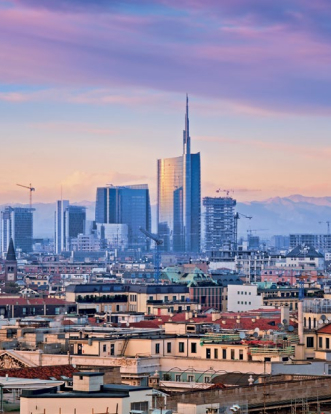As published in

German Chancellor Olaf Scholz’s recent meeting with President Sergio Mattarella at the Quirinale Palace in Rome marked the beginning of a productive new partnership following the signing, last year, of an extensive action plan between the two nations.
The five-point action plan – touching on issues connected to foreign and defence policy, the economy, EU, climate and culture – was finalised at last November’s intergovernmental summit in Berlin and is designed to boost the countries’ bilateral links. The agreement is already proving to be a catalyst for collaboration. In Rome, President Mattarella’s assertion that Italy was enjoying «extraordinarily solid” relations with Germany was echoed by Chancellor Scholz, who expressed his hope that the deal would “bring new cooperation plans and new partnerships.”
The economies of the two countries are closely interconnected, together generating more than €160bn-worth of trade in 2023. Despite a slowdown in its economy over the last 12 months, Germany remains Italy’s most important economic partner. It is thought that further cooperation, especially in the field of advanced
manufacturing technologies, could lead to significant gains, and plans are already underway to foster these fresh opportunities. Building on the success of Italy’s ‘Industria 4.0’ and ‘Piano Transizione 4 .0’ initiatives, the government has introduced a new incentive scheme, ‘Piano Transizione 5.0’, which will focus primarily
on fostering green and digital innovation. The plan includes a €5bn fund set aside for technology-focused investments, including artificial intelligence (AI), augmented reality (AR) and industrial internet (II) projects. This is in addition to the existing funding pot that forms part of the country’s ambitious post-pandemic National Recovery and Resilience Plan.


The economic relationship between Italy and Germany has significantly influenced European growth and prosperity over the decades.
Italy and Germany have been central to European economic dynamics since World War II, beginning with their founding roles in the 1951 European Coal and Steel Community. This partnership was strengthened by the creation of the European Economic Community in 1957, now the European Union (EU).

Germany has consistently been Italy’s largest trading partner, with significant trade in machinery, automotive parts, chemicals, textiles, and agricultural products. The adoption of the euro in 1999 further intertwined their economies.
Investments have flowed both ways, with German firms investing in Italy’s manufacturing and tech sectors, and Italian companies tapping into Germany’s market, especially in fashion, automotive, and food industries.
Despite challenges like the Eurozone crisis, where Germany’s involvement in bailouts impacted Italy, the countries have maintained strong economic ties. These ties not only support significant trade and investment between the two nations but also play a crucial role in the broader EU economy.
